After the monumental climb that was Tongariro Crossing (related last week) Nicole and I parted company with our other friends and moved on to the next stop, Hawke’s Bay. Before we had even pulled out of the shadow of Tongariro we stopped at the National Trout Centre on the Tongariro River to have another look for Blue Ducks. The overgrown trail made even seeing the river tricky, and we never did find them, so Nicole maintains that they don’t exist and I made them up.
Hawke’s Bay is on North Island’s eastern coast, midway up the island, a large semicircular bight. Towards the southern end of the bay is the area tourists associate with Hawke’s Bay, the wine country that surrounds the twin cities of Hastings and Napier. Napier, located on the coast, is a charming little city famous for its Art Deco architecture (the town was badly damaged in an Earthquake in the 1930s). We ended up staying down the coast a bit further on, in a village called Te Awanga. The campsite here was charming; small and quiet, with the beach on one side and an attractive lagoon maintained for waterbirds on the other. The lagoon had a number of species, including a pair of New Zealand Shovellers (the local subspecies of the Australian Shoveller), a large family of Paradise Shelducks, a roost for various shag species and Welcome Swallows. The nearby park had Little Black Shags nesting on the tiny island in the middle of the pond.
New Zealand Shoveller (Anas rhynchotis variegata) pair
We were in town for two things. One was a trip out to Cape Kidnappers, which was nearby and marked the southern end of Hawke’s Bay. The other was to check out some wineries. We were particularly in luck with regards to the latter, as at least two fine wineries were within walking distance of the campsite (it is always good to make sure you don’t have to drive!). In the afternoon we visited first Clearview Estate and then Te Awanga Vineyard. Some vineyards charge for sampling their wares, but sampling was free here, and Clearview in particular had a rather massive selection to try (and obliviously it would be rude not to sample all that was offered). Both places have garden restaurants that serve food under olive trees or vines to increase that Mediterranean ambience. Not only was the wine very nice, the people were very friendly. When the heavens opened up we faced the prospect of walking back in the rain (we had to be back for the trip to the Cape), but the new owner of Te Awanaga Vineyeard gave us a lift instead.
Very soon after our winery tour we began our trip out to Cape Kidnappers. I can’t say I’ve done much birding with the buzz of a few drinks but when you don’t have to do much in the way of identification or spotting it’s kind of fun. The tour left around 4, the lateness of the hour due to the tour being dependent upon the tides. You can take a tour that goes by road, but this tour was on the back of a trailer pulled by a tractor. We were treated to a tour along the cliffs that was part birds, part geology, part history. The geology is particularly impressive, the area is racked by earthquakes leading to numerous faults in the sedimentary lines. The cliff is also full of fossils, mostly shells and lignin (fossil wood).
Tour vehicle and tour guide!
The birds along the trip were the typical shore and inshore seabirds you’ll see around New Zealand. Variable Oystercatchers were common along the beaches, as were Kelp Gulls and Red-billed Gulls, which nested on the cliffs, along with the White-fronted Terns. The cliffs also had a population of Rock Doves (or Rock Pigeons) which had abandoned the towns and returned to the cliff living of their wild ancestors. But the real treat, and the reason for the tour, are the Australasian Gannet colonies. There are several of these at the end of the Cape. The first you encounter are close to the shore on the foot of the cliffs, and on little islets by the shore. The bigger colonies are located at the end of the Cape itself, and it is to these that the trip takes you. This involves a ten minute climb up the cliffs, but the views can be spectacular.
Cape Kidnappers through some Cabbage Trees.
 A colony further down the cliff towards the cape.
A colony further down the cliff towards the cape.


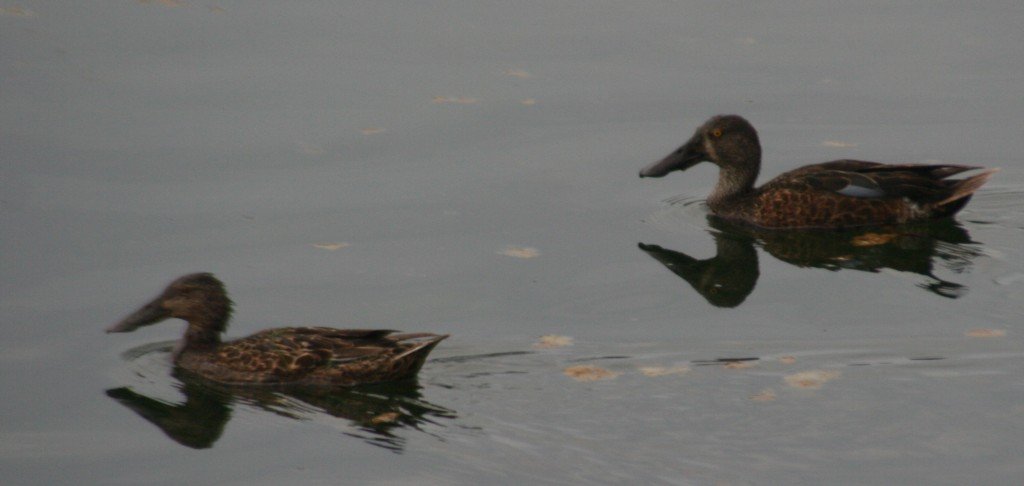

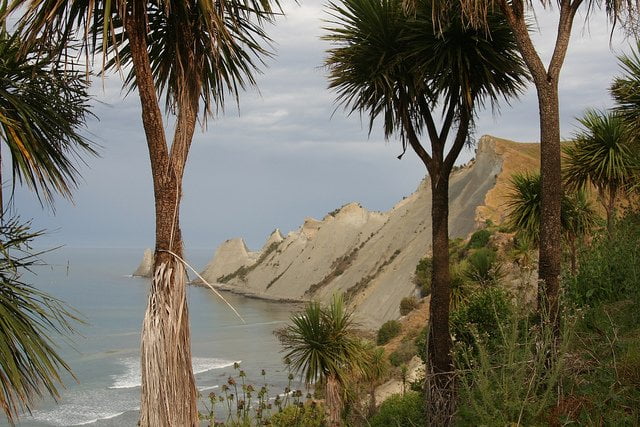
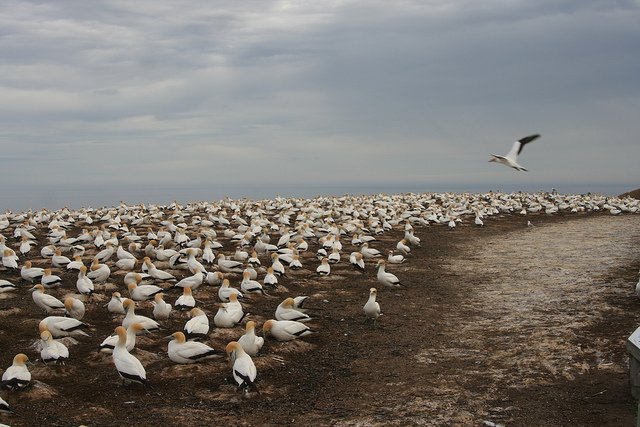






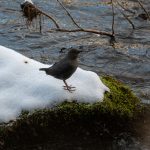

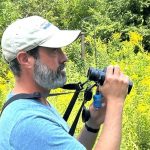
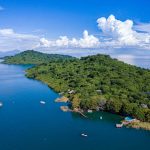



If necessity arises, I can very happily confirm the existence of Blue Ducks. Seabird colonies always make me realize how limited digital communication still is as it can’t convey the smell.
Oh, the smell.
Actually, three years working on the Farallon Islands pretty much destroyed my ability to detect the smell. It takes an effort to notice it.
Duncan, Here’s proof of the existence of blue ducks (whio).
Seals smell worse! There’s a great colony of Australian Gannets near Portland, Victoria on the actual mainland. They are protected from foxes by 2 Mareema dogs.
Those gannet shots are spectacular, Duncan, especially that colony shot. The perspective of seeing the gannets and shovelers, two types of birds with very few species, on the other side of the globe makes this world of ours feel a bit smaller.